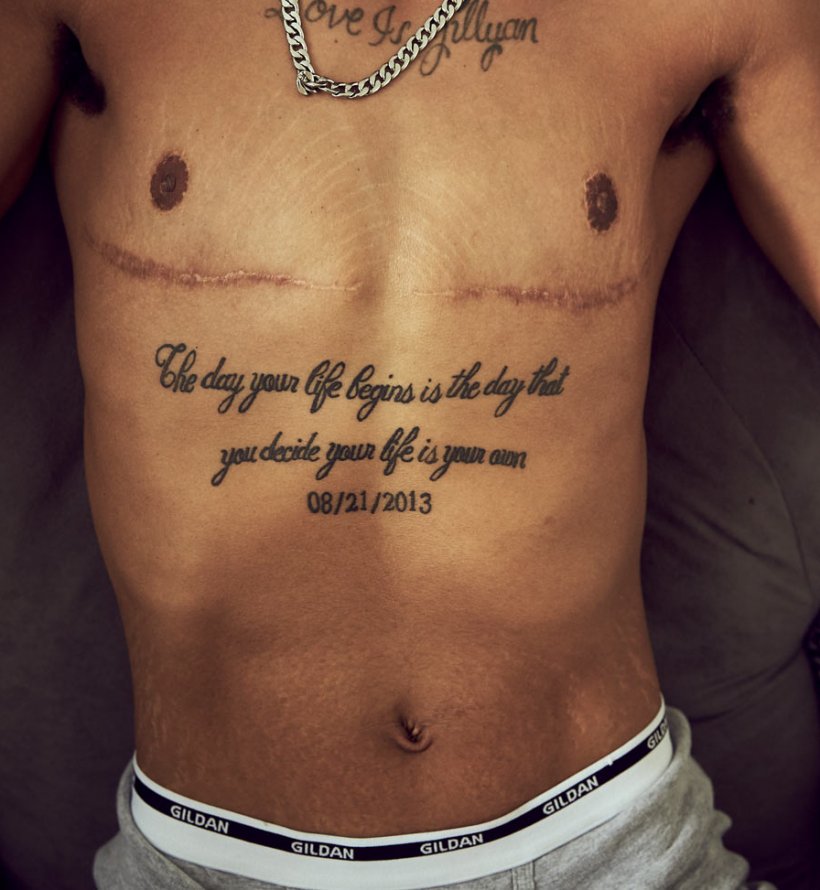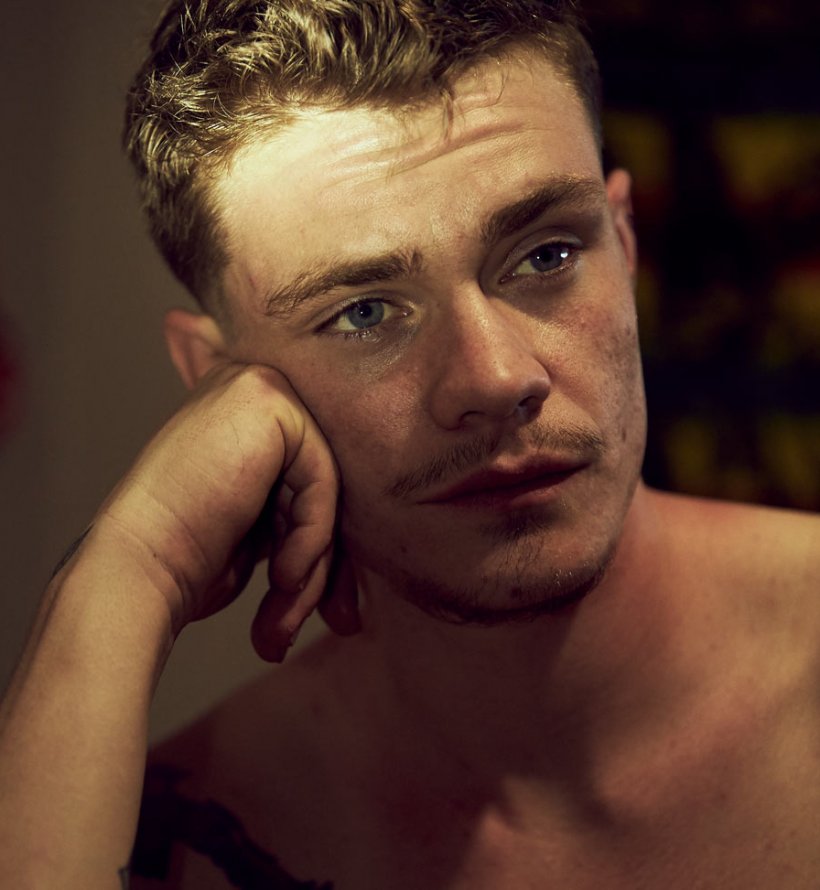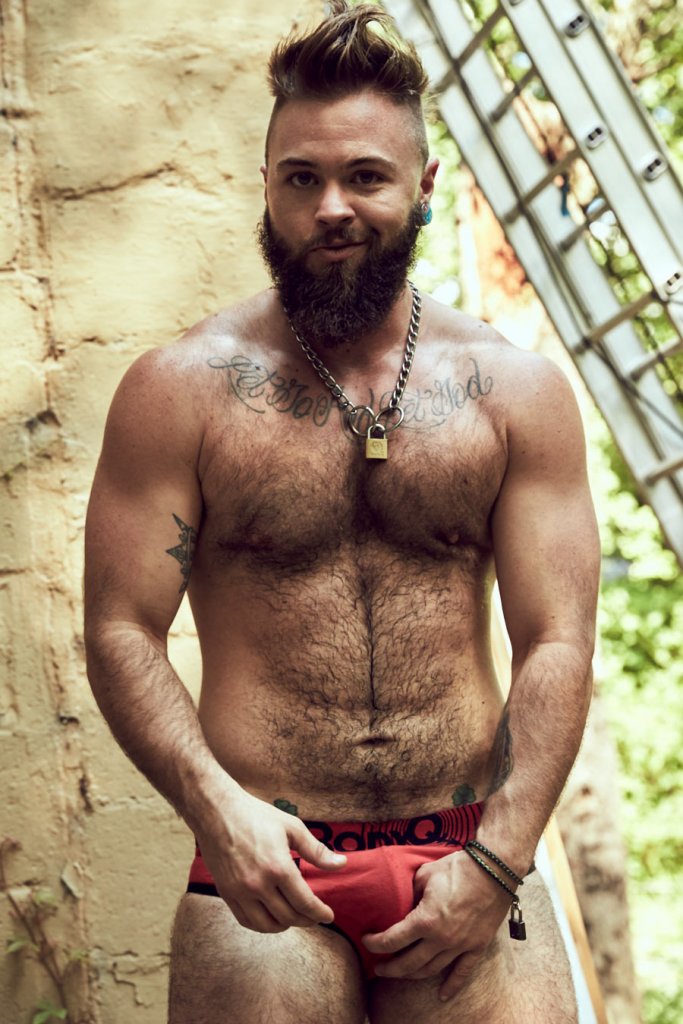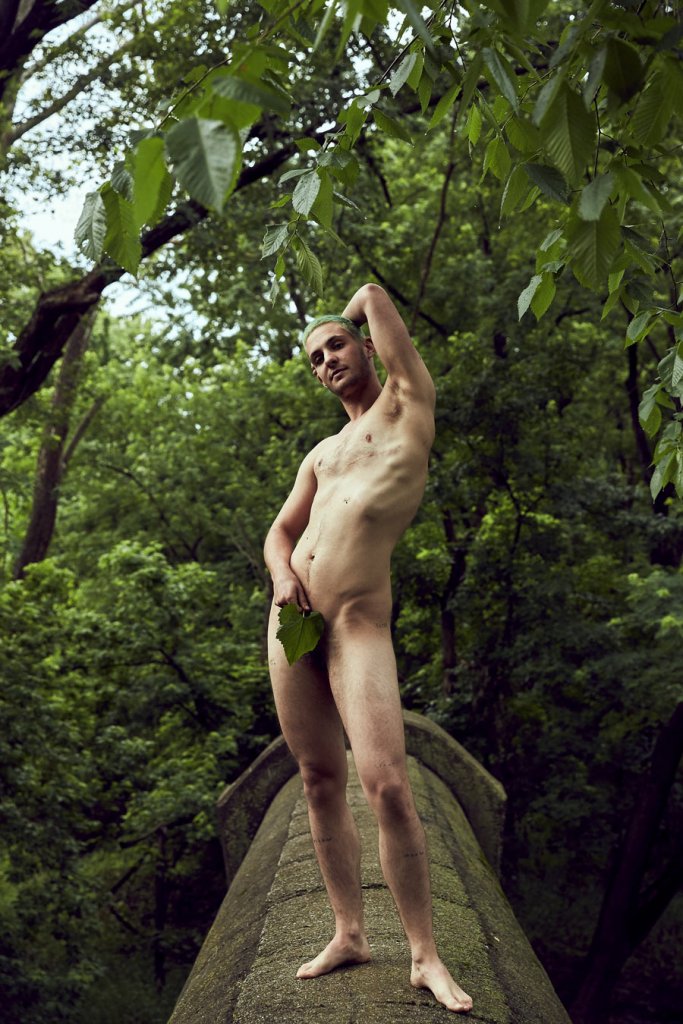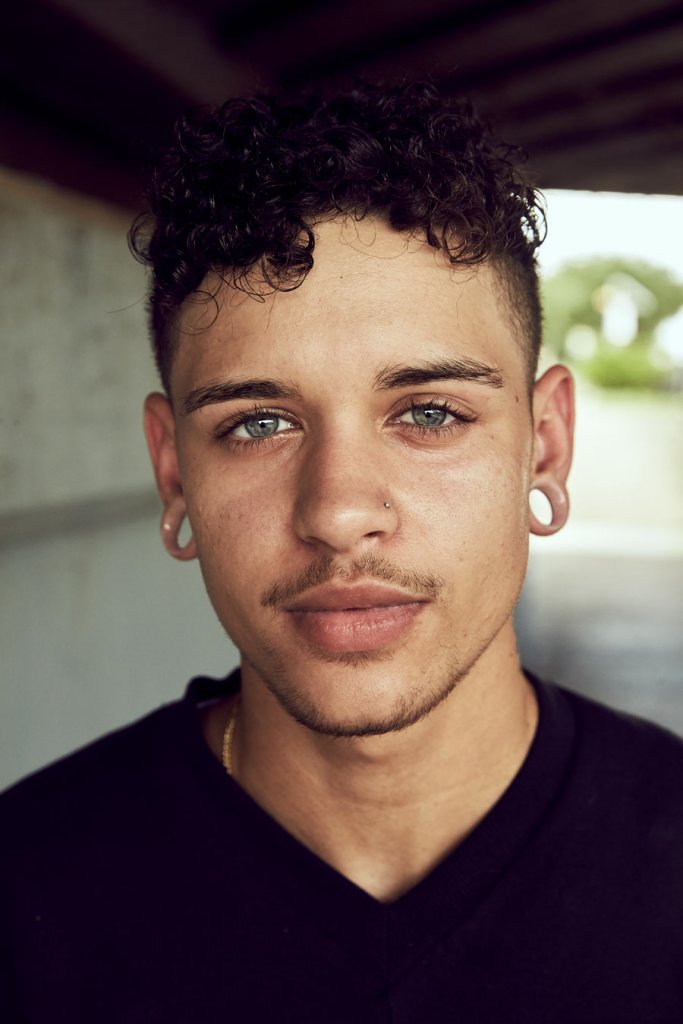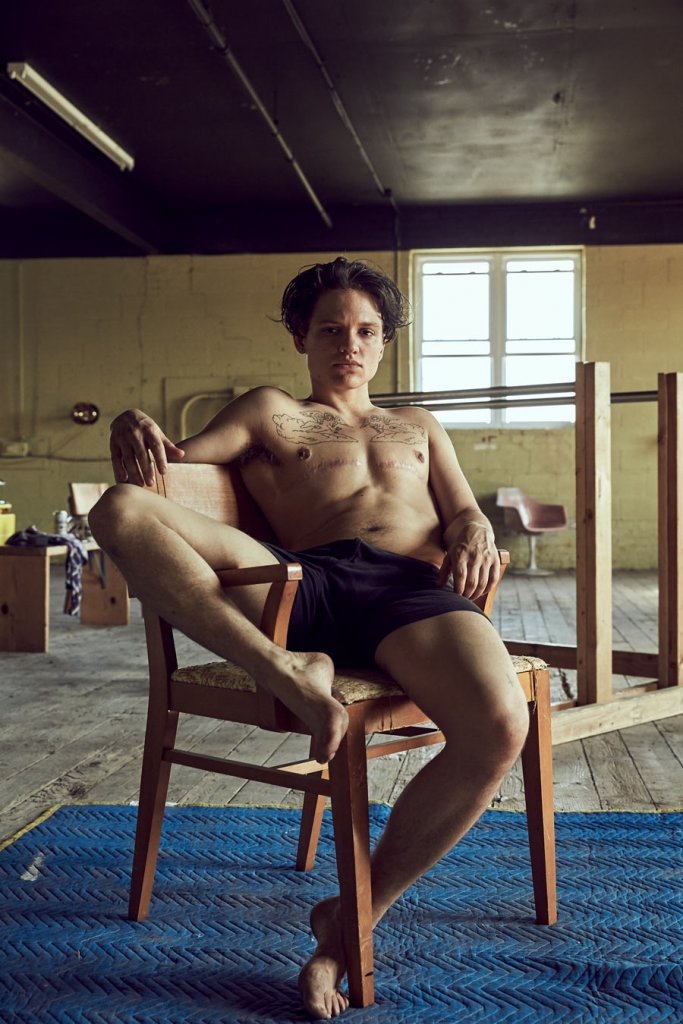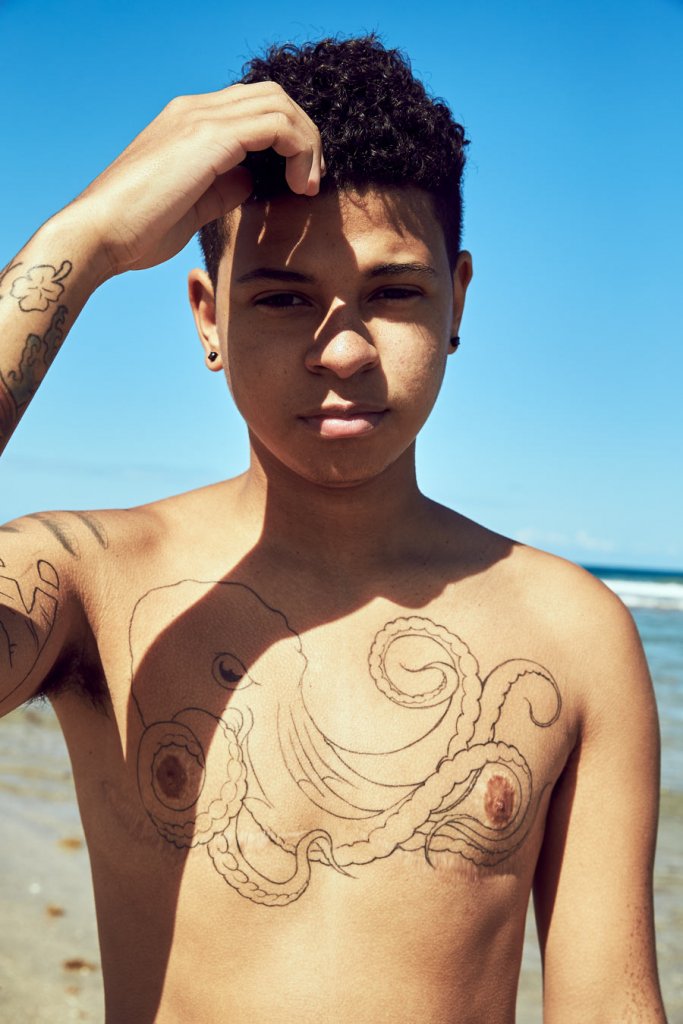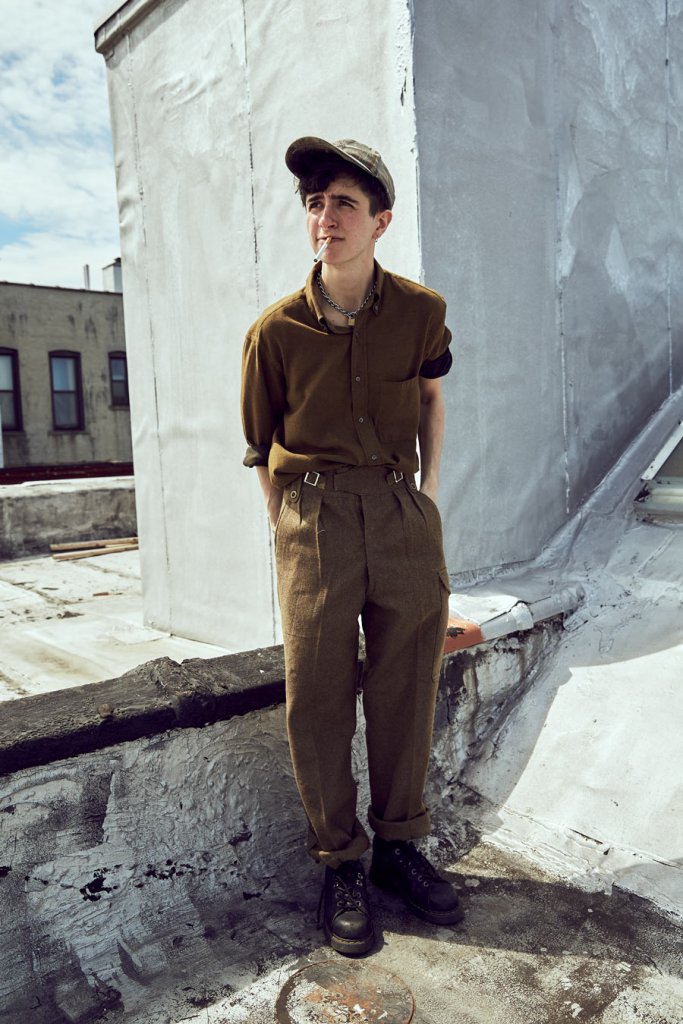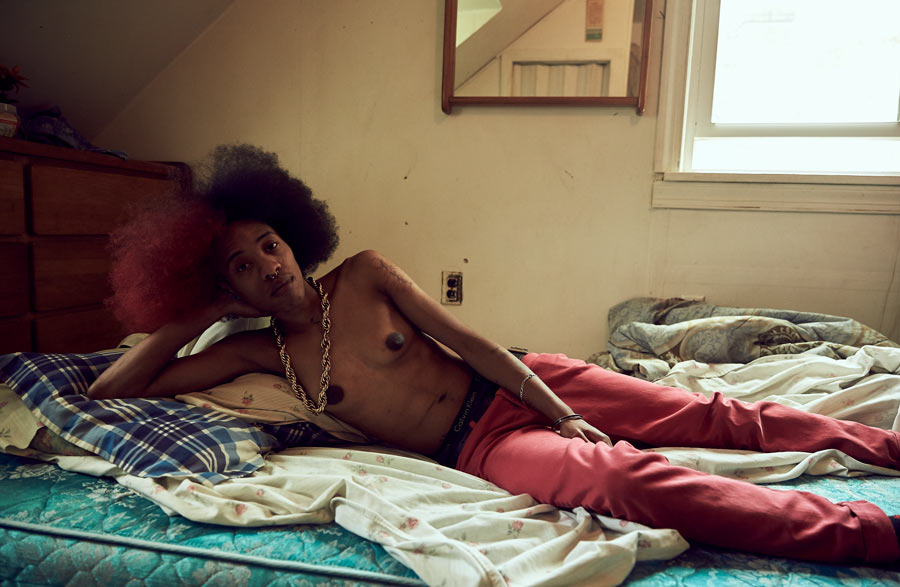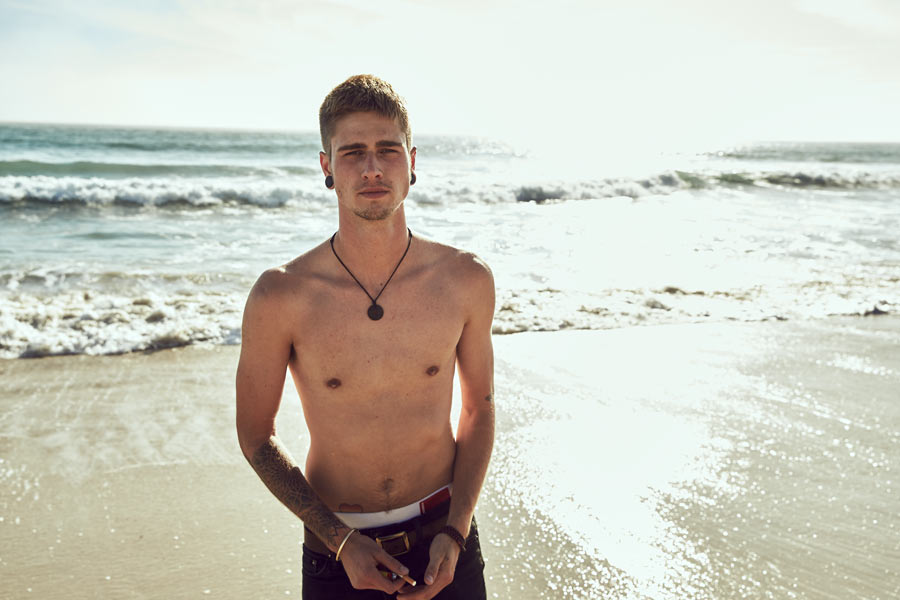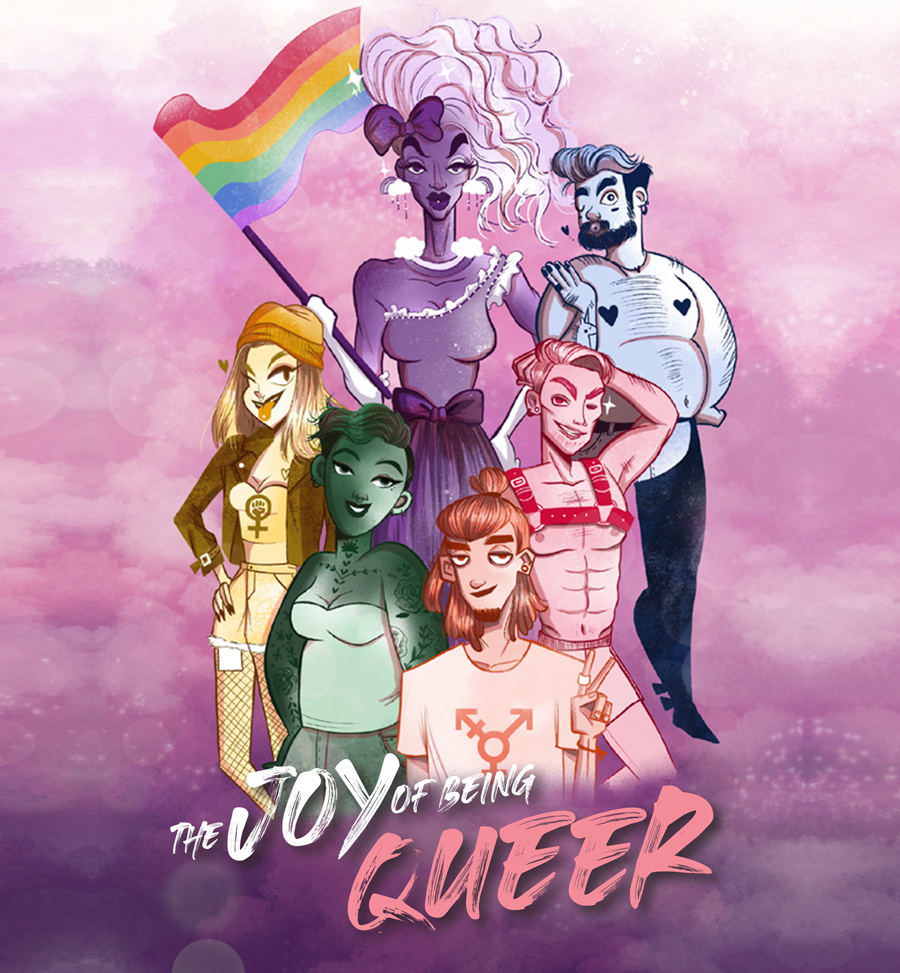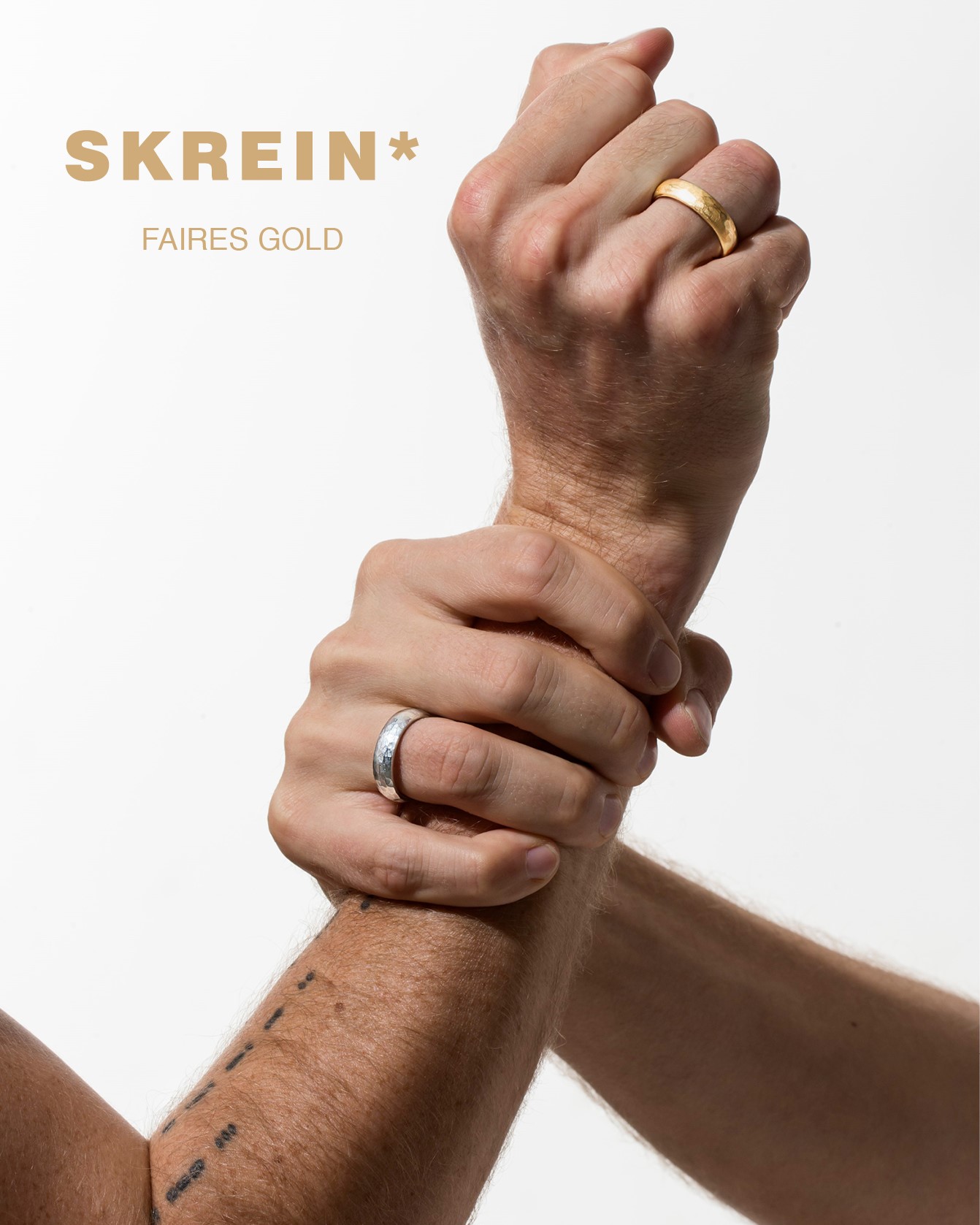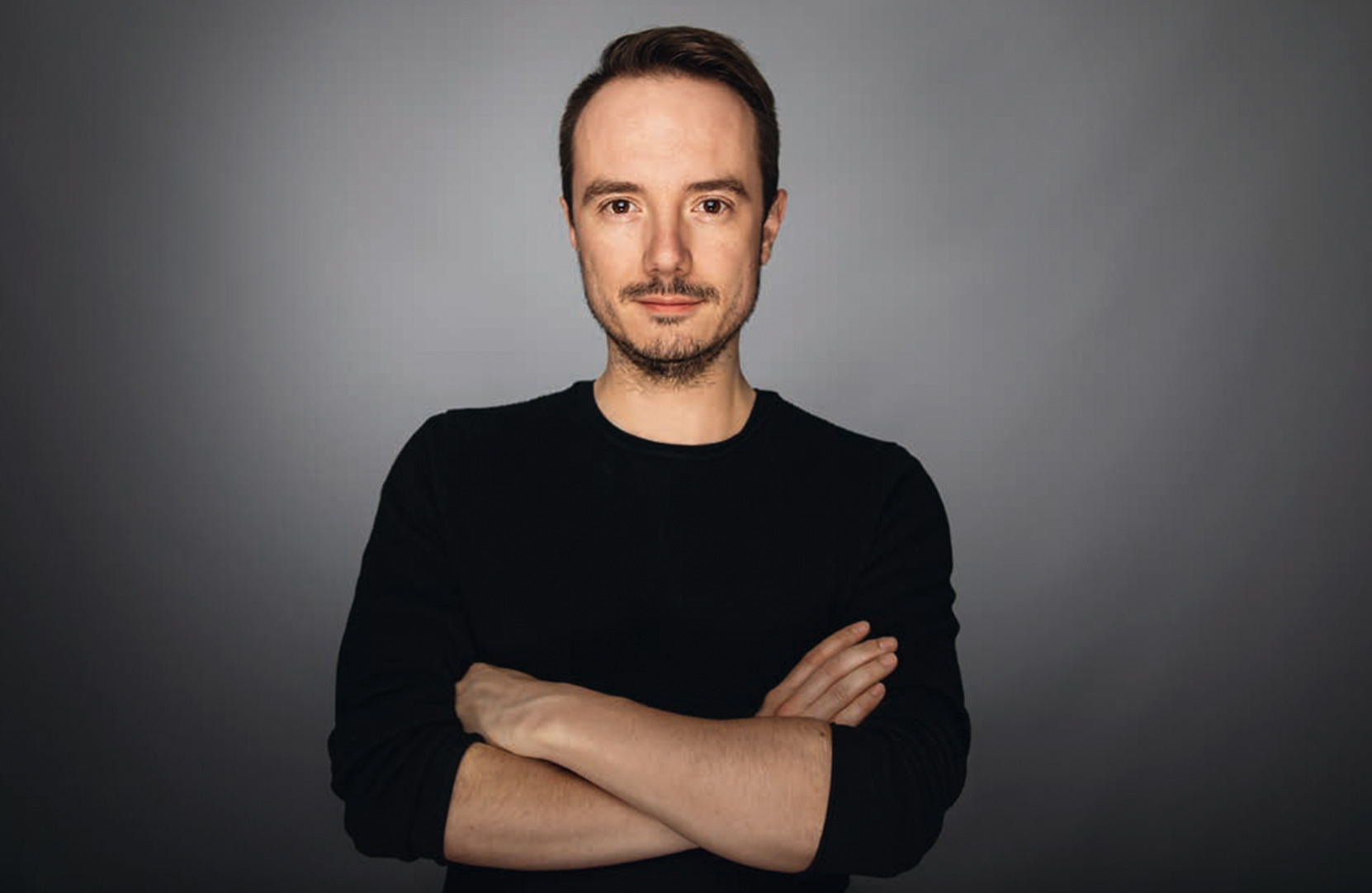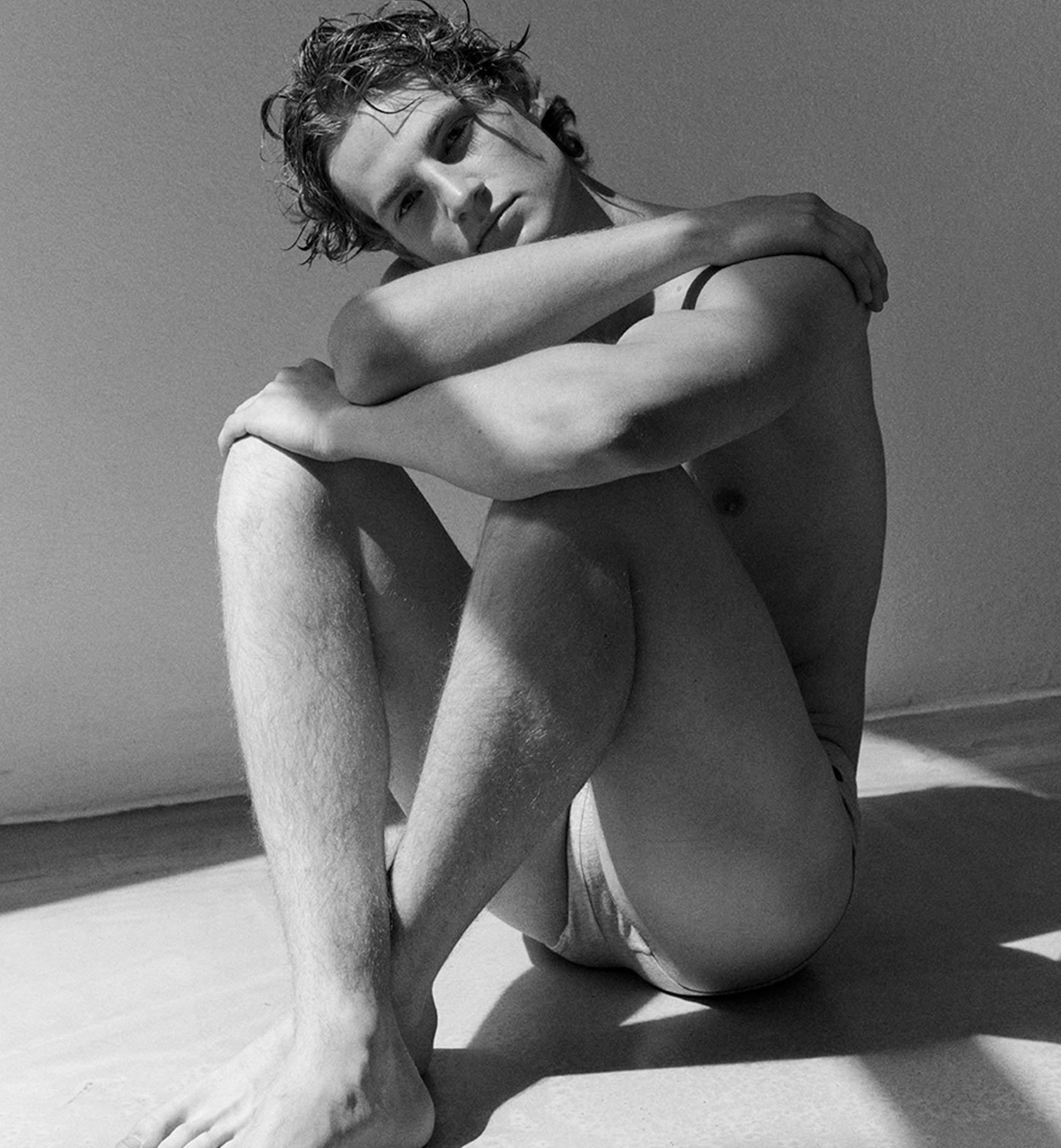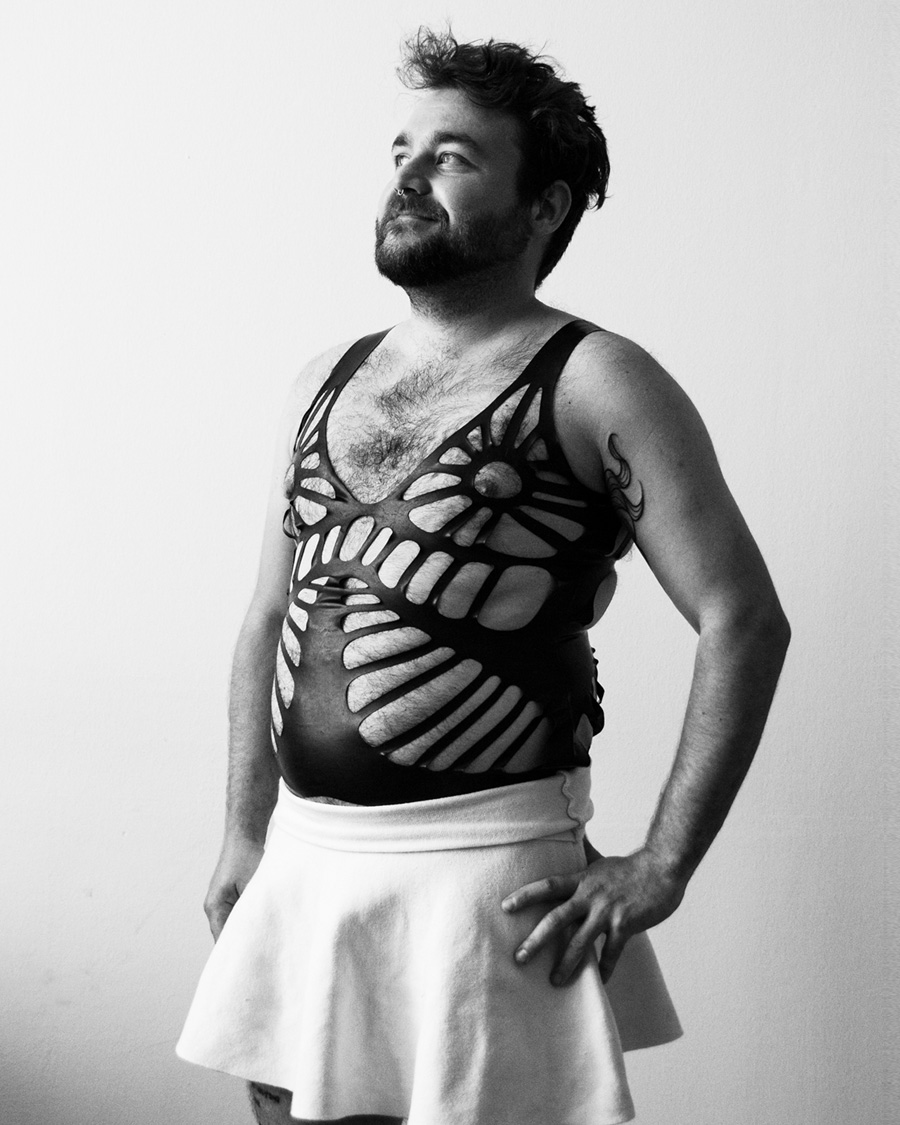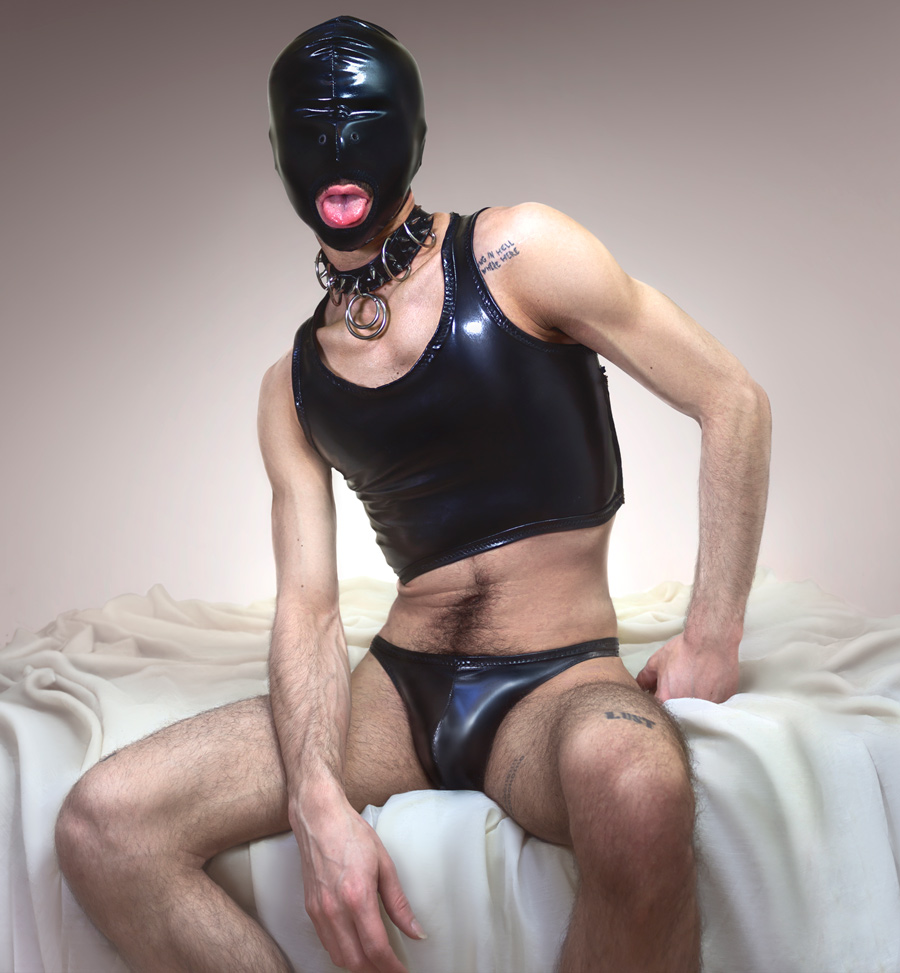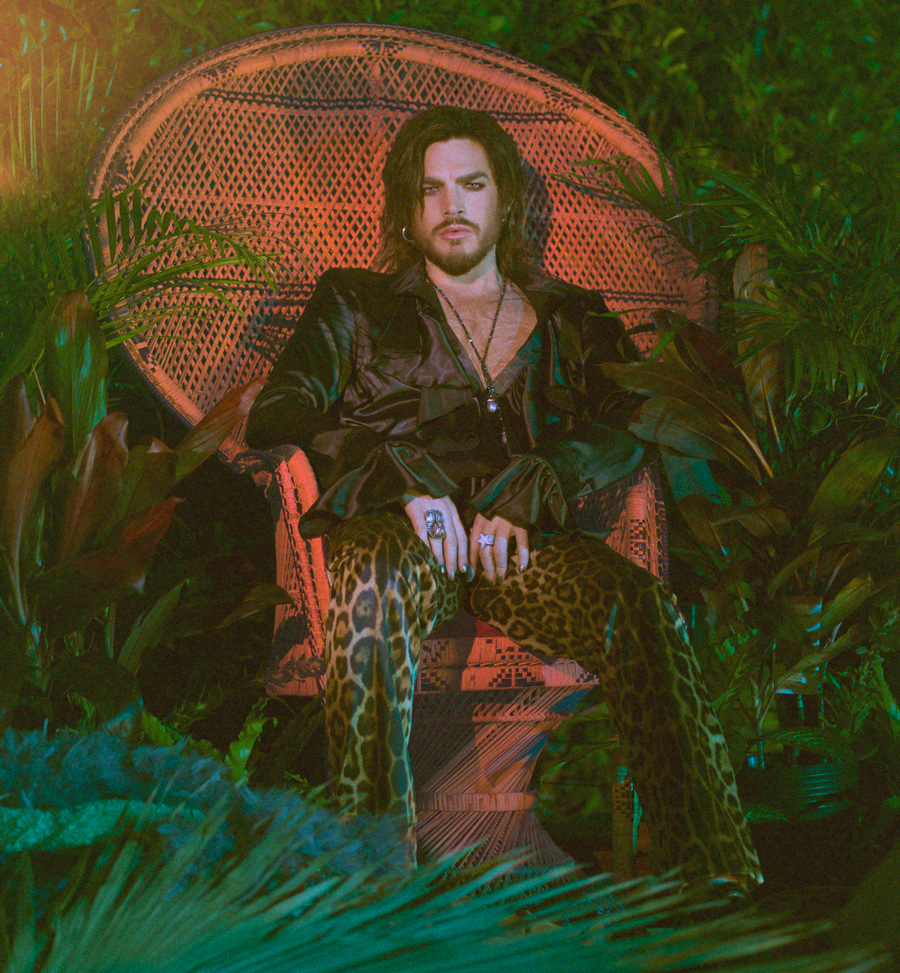“Strangers staring, they want to be the first to ask for my life in one word. But it’s not that simple – why do you care to know? Am I a boy or a girl?” So singt LGBTQIA+ Aktivist und Transgender-Musiker Skylar Kergil über die Erfahrungen mit seiner Transition. Egal ob männlich, weiblich, transgender oder no gender at all: Das steife Geschlechter-Korsett ist längst überholt und gehört abgestreift. Danach lebt auch Soraya Zaman. Dier* non-binary Artist wurde vom Fotografie-Netzwerk „LensCulture” im Jahr 2019 als aufstrebende fotografierende Person ausgezeichnet. Im aktuellen Projekt American Boys portraitiert sier* die trans-maskuline Community: Realistisch, persönlich und hautnah.
*Personenbezogene Formulierungen sind geschlechtsneutral
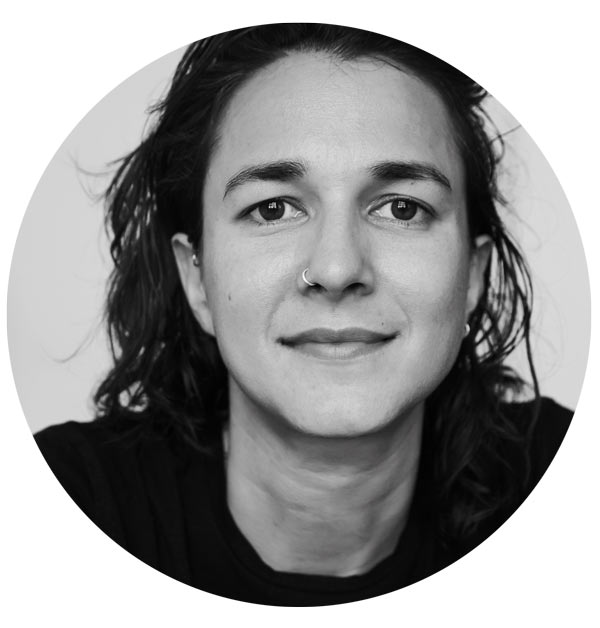
Your current photography project is called American Boys.
What is it about?
American Boys is a portrait series of 29 transmasculine individuals captured at distinct stages of their transition from big cities to small towns across the USA. Each series is accompanied by first person accounts that came from conversations we had together. It started as a personal project. I was looking to explore expressions of transmasculinity. It quickly changed with each new person I met and photographed as it became apparent that honoring and sharing stories, validating and centering everyone in an affirmative way was really important, especially in the now changing political climate. It’s work that informs and expands upon understandings of gender identity outside of the binary in a real and authentic way. It challenges people’s own perceptions of traditional binary gender roles.
Did working with trans men have an effect on your personal growth?
At the time I was shooting this project, I was looking to explore expressions of transmasculinity as it was personal to me because of my own feelings and my gender identity journey. A lot of the stories that everyone shared with me are, in some ways, my story, too. I think listening to everyone I photographed and sharing their stories definitely helped me further shape and understand my own gender.
Our society often sees being trans and masculine as polar opposites. For many people, these two ways of expressing one’s true identity doesn’t compute. What needs to change in our collective mindset?
Society needs to unpack this belief that gender identity must align with one’s sex assigned at birth. There is an ingrained belief in heteronormative society, that there are only two genders and that men must be masculine and women must be feminine. Masculinity is in fact, a social construct and is performative. Society has established a strict set of behaviors coupled with guidelines about how those behaviors are allowed to manifest – what it means to “be a man”. However, everybody has the capacity to express both masculinity and femininity and gender is on a spectrum. Queer people are the champions of embodying masculinity and femininity outside of these rigid binary constructs. Take for instance a feminine trans man, masculine butch women or gender fluid individuals. These are identities that display a more complex expression and are examples that masculinity (and femininity) are not limited by gender.
“I hope that my work can invoke human connection that perhaps will transcend labels, stereotypes and societal norms.”
How do you try to break this stigma with your work?
Is your photography rooted in activism?
I think any artist’s work, mine included, that leans into documenting people and the world around them to inform, expand and question one’s perceptions and understandings, especially of marginalized communities, is a form of activism. I hope that my work can invoke human connection that perhaps will transcend labels, stereotypes and societal norms.
You refer to yourself as non-binary. How does your non-conforming gender influence your photographs?
I think when I take pictures of trans and non-binary folks, my images convey an inner part of me as well. It’s less about interpreting someone else’s experience, because it’s also my experience in a way. For instance, a heterosexual cis gender man or woman would only ever be interpreting the experience of gender expansive folks because they are not a part of the community.
How does the work with transgender men influence your stance on gender constructs in general?
I think my stance is pretty clear. I hope my work informs and expands upon understandings of gender identity outside of the binary, in a real and authentic way and challenges people’s own perceptions of traditional binary gender roles. I think it is important for trans and non-binary people to see themselves represented in mainstream media in a way that doesn’t feel tokenistic. The world perversely only recognizes two genders, so it’s also important that these rigid binary ideologies are broken down. If we – cis people in particular – can all grasp the concept that gender is a social construct and put into practice an acceptance and understanding of more fluid identities and expressions in everyday life, we can help create a more inclusive and accepting world that is free from toxic displays of gender and the patriarchy.
Your photography reflects real life – you have real people with real scars in front of your camera.
What kind of stories do you want to tell with your work?
These images and stories honor everyone’s personal journeys of gender. They validate and center them in an affirmative way so everyone feels seen. They give a glimpse into each person’s life at a specific moment in time, their personality, honesty, humor, beauty, vulnerability, strength, etc. etc. The message I hope to convey through these stories is to show people that trans identity is something to be proud of. That you can thrive and be happy. You can have successful relationships and live a wonderful life. Hopefully it helps move us all closer to a culture that welcomes, validates and provides safety for all identities.
Was it difficult for you to find your own identity?
Yes. I’ve always known I was queer, but it took me longer to figure out I was non-binary. When I was a kid, I didn’t feel represented in the media. There was little to no information, language and imagery around gender identity outside of the binary. So it took exposure to these kinds of visuals and language for me to question and come into my own understanding of my gender. For so long, we’ve all just been fed the same cis gender, heteronormative view of the world. The binary gender roles that have been constructed by the western world confine us into a box that doesn’t leave any room for nuance or complexity. These rigid binary ideologies of what is expected are dangerous, oppressive and toxic to trans and non-binary people. We are asked to fit into a box that ultimately can never contain our multitudes. It’s really only recently that we have begun to see queer and trans people represented in a way that doesn’t feel tokenistic.
How do you get rid of social or gender stereotypes to find your true self?
That’s a tough question, because everybody’s journey is different and there really isn’t a prescribed way to find your true self. I think perhaps grasping basic concepts around the differences between sex assigned at birth, sexuality, gender identity and gender expression, is a good start. Also understanding that binary gender is a western concept that is socially constructed and that masculinity/femininity are attributes that any gender can have and act out.
Body and mind: How do you see yourself in the mirror?
I’m just me, I just see me.
Body and mind: How do you see youGhandi said, “Be the change that you wish to see in the world.” Do you have a quote or a phrase that describes you, your work or your vision?
Proud as fuck.
Folge Zoraya bei Instagram
für mehr wunderschöne Geschichten & Fotografien


